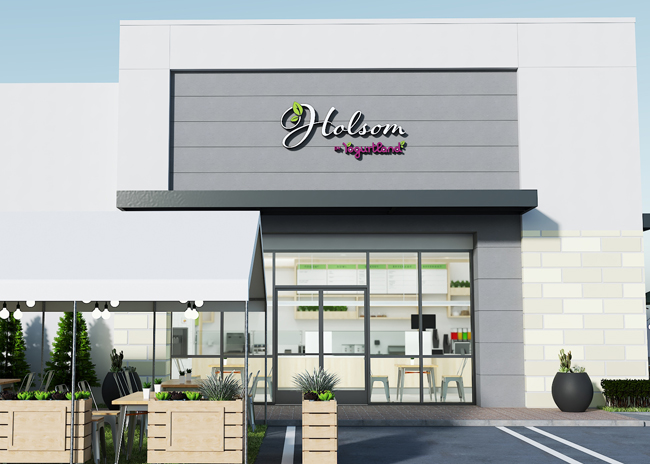 Joe Crowley, Senior Project Manager, Trinity Building + Construction ManagementAs a senior project manager for a general contractor that specializes in restaurant projects, I’ve helped clients open restaurants in several different states. While most of these openings have gone smoothly, I’ve noticed a trend recently that has resulted in some less-than-smooth openings.
Joe Crowley, Senior Project Manager, Trinity Building + Construction ManagementAs a senior project manager for a general contractor that specializes in restaurant projects, I’ve helped clients open restaurants in several different states. While most of these openings have gone smoothly, I’ve noticed a trend recently that has resulted in some less-than-smooth openings.
Sometimes when openings run into trouble, it’s out of the hands of the client and GC. Maybe bad weather pushed the opening later than the owner wanted. Maybe a manufacturer didn’t come through with some fixture or furnishing as promised or the existing structure had more problems than anyone realized.
But sometimes owners can cause havoc and headaches for themselves. This happens when they insist on starting a project before it’s ready. I call this “chasing a start date.”
I understand what they’re thinking. Most of the clients I deal with want to get started because they want to open as soon as possible. These clients will talk about how “the rent starts now” or how they need to be open for a holiday or a certain date because it’s a big weekend for that area. A restaurant that is not open is a restaurant that is losing money, as everyone knows.
This plays into one of the biggest misconceptions in construction: that starting sooner means opening sooner. Starting a project is extremely easy. For a successful project, however, you need to review the big picture to understand when it truly makes sense to start.
Figuring out the appropriate start date begins with a review of the design documents. In my estimation, if you don’t have at least 85 percent of the design done before you start, you’re setting yourself up for trouble — the type of trouble that can cost you weeks or months and literally tens of thousands of dollars.
These problems start with the bid process. If you are competitively bidding a project out to multiple general contractors before you get to that 85 percent with the design, then you have almost guaranteed that you will have more added costs during the project than needed.
This can be traced back to having to carry “allowances” for a project. An allowance is a dollar value placeholder for scope/information not shown or only partially shown in the drawings. This dollar value, owners hope, will cover what they end up deciding to do. Having no allowances on a project may not be realistic, but limiting allowances certainly is, and there are plenty of reasons to do so.
When general contractors competitively bid a project, they typically price only what is shown on the drawings and will only factor in an allowance number if the client requests they do, knowing the other general contractors are carrying the same value on their bid. This helps both contractors and owners. If GCs tried to include allowances while their competitors didn’t, owners would have trouble making apples-to-apples comparisons of different bids. Meanwhile, any contractor that included these allowances when competitors did not would end up submitting one of the higher bids, leaving them with practically no chance of getting the project.
By having a high number of allowances, then, owners aren’t getting the project’s actual cost. Even worse, they’ve put themselves in a tough spot as soon as they award the contract. That’s because before the project is awarded, a GC’s subcontractors are bidding against each other so they give their best price possible.
After the project is awarded, though, the subcontractors already have the job locked up. They are no longer competing against others, so they price these newly defined scopes with their typical — and most likely contractually agreed-upon — markup, driving up the owner’s cost. Depending on how big these scopes are, owners could spend thousands of dollars more than if the design decisions were made earlier in the process.
Starting a project before the plans are complete can hurt your business in other ways. This begins when you fill in the missing items in a bid. When you do this, you’re introducing new information to the project. Even if you have an allowance for this scope, it still needs time to be priced and the pricing then approved. Sometimes, you’ll then have to deal with long lead times to get the item. Other times, depending on your construction schedule, you’ll only have a short window to get the items you want.
When this occurs, I see one of two things happen: Either the client changes the product to something they may not want but can procure more quickly or they pay more money to expedite the original product. And even if they decide to spend more money to expedite a product, there is now an increased chance of receiving it past the date it was scheduled to be on-site.
These delays can trickle down throughout a project. Furniture, for example, can’t be installed until the flooring is in. If a project’s flooring is specified late, the owner may end up spending extra money on overtime to get the floor installed in order to hit the scheduled date for furniture installation. This overtime expense could have been avoided if the flooring had been figured out earlier in the process. That money could have been used in other areas of the project — maybe for nicer finishes or unexpected challenges such as manufacturing delays, weather delays, changed/discontinued products, etc.
Clearly, then, it makes sense to start construction only when your drawings are as close to done as possible. Despite this, of course, some owners will move forward before their plans are complete.
If that’s you, I strongly recommend that you work with just one general contractor on the project. By doing this, you and your GC can work closely to tighten your budget by really digging into what’s missing from your design. This can help you financially account for many of the details that are not yet shown and/or designed, helping save money with your subcontractors.
Choosing a general contractor who has a great restaurant resume will help you even further as they can do more to fill in those missing project details. Restaurants are different than other building projects, and contractors that don’t build restaurants don’t really understand everything that’s involved. The slightest changes could have the biggest impacts on design, schedule and expenses. The more expertise you can bring on your team, the better.
It’s never expected that drawings will be 100 percent complete and ready to go before you start, but you should work to get them to be as close as possible. The closer you can get, the more money you will save, the more time you will save, the more aggravation you will avoid and the more you can focus on your opening date. You may have to spend a little more time and money to get these drawings closer to complete, but those investments will save you time and money by the end of your project. That will bring you closer to your ultimate goal: a successful, timely grand opening. That is what I call “chasing a completion date.”



